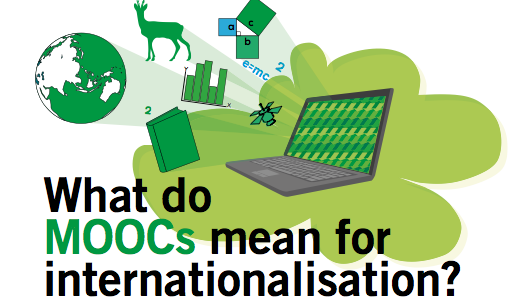Initially the overwhelming majority of MOOC courses came from US institutions, but a number of platforms have been developed in other countries including Japan, Germany and the UK. The UK’s Open University will offer courses from 12 UK universities via its Futurelearn platform starting this year. In Germany, the OpenCourseWorld platform for free online courses is offering German-language MOOCs from Saarland University.
News and business analysis for Professionals in International Education
Have some pie!
What do MOOCs mean for internationalisation?

The French government has meanwhile launched France Université Numérique (France FUN), a national platform that will aim to offer 20% of French university courses online by 2017, while Spain’s Universidad de Alicante is working with Google on a MOOC project.
Despite the growth, language and educational background can often stop many around the world accessing MOOCs. According to Patrick McAndrew, professor of open education at the Open University (UK), maintaining the “open” facet of MOOCs is key to attracting more non-English speakers. “We need to work in a way where other people who need different language versions can create them and they would become part of the global community trying to tackle them,” he says.
Online communities offering translated versions of US courses have popped up around the world, fuelled by the demand from non-English speaking students and the open access nature of MOOCs. For example, Veduca in Brazil, offers its one million plus Portuguese-speaking users more than 200 translated courses from institutions including New York University, Stanford and Harvard.
There is also unX, a project which claims to be the first entrepreneurial Latin American community, which offers an entirely open learning system through translated courses from MIT. It tells users they can join an online community to “find the training they need to fulfill a project from business ideas to the creation of an SME to finding new partners”.
“We need to work in a way where other people who need different language versions can create them”
Structuring courses to include students with lower education backgrounds is also needed to bring more learners on board. “This means designing material for people who’ve got less strong educational backgrounds so that you enable them to carry out the right tasks,” says McAndrew.
Knowing more about the students who have signed up will also help institutions deliver targeted courses. The University of London has over 100 years experience with broad access distance learning and aims to launch its first MOOC this year. Jenny Hamilton, director of international programmes, seeks to “gain [such] insights to make adjustments accordingly before we go live”.
Thinking outside of OECD countries
While MOOCs make access to education more plausible they do not offer a “live” educational experience – something doubters say will affect their long term impact. David Webster, religion, philosophy & ethics professor and e-learning developer at the University of Gloucestershire, also underlines the obstacle of certification, saying it could hold back job-seeking MOOC students.
“To get an education in a lot of developing countries you need to be certified. The expansion of MOOCs may break in developing countries unless they get sourced out or unless people opt into an assessment or accreditation procedure.”
Others warn the Massive in MOOC brings scale but security issues when it comes to certification, given most rely on peer-assessment. One response from tech platform Udacity has been to team up with Pearson VUE test centres to offer paid-for invigilated exams.
MOOCs are also perhaps most exciting when considered as a global phenomenon, but they are not quite there yet. That’s not say there isn’t the potential, though. According to the UNESCO Institute for Statistics, students from Central Asia and sub-Saharan Africa are the most mobile in the world, while Ambient Insight has praised Africa and Asia’s dynamic e-learning markets (Vietnam and Malaysia are said to be particularly strong).
“In Brazil they are demanding education and education on a huge scale. So you can see an enormous space for initiatives like MOOCs”
Meanwhile, about 6 out of 100 tertiary students from Central Asia and 5 out of 100 from sub-Saharan Africa go abroad to study. MOOCs offer these students low-cost opportunities to get a foreign education at home. And in India alone, the size of the online education market is set to double to $40 billion by 2017.
In Brazil, the country that provided Edinburgh with one of its largest cohorts, Mota says MOOCs have great potential for the newly emerging middle classes. “They are demanding education and education on a huge scale. The state can’t provide for the traditional ways of attending universities. So you can see an enormous space for initiatives like MOOCs, especially in vocational courses.”
Traditional outbound student markets where international branch campuses now sit could also be a hotbed for MOOCs, according to Rahul Choudaha, Director of Research and Advisory Services at World Education Services.
“Branch campuses are infrastructure-intensive efforts with high financial and reputational risk. In contrast, MOOCs offer a low-cost, flexible alternative for ‘glocal’ students to potentially earn a foreign credential,” he writes on his blog, dreducation.com. “In the next few years MOOCs will mature from irrational exuberance to a more sustainable model that fundamentally changes the form and character of foreign branch campuses.”
Still looking? Find by category:


